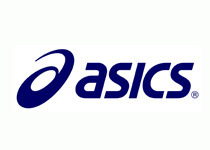Asics
In 1949, Mr. Kihachiro Onitsuka began his athletic footwear company (Onitsuka Co., Ltd.) by manufacturing basketball shoes out of his living room in Kobe, Japan. He chose the name ASICS for his com...
In 1949, Mr. Kihachiro Onitsuka began his athletic footwear company (Onitsuka Co., Ltd.) by manufacturing basketball shoes out of his living room in Kobe, Japan. He chose the name ASICS for his company in 1977, based on a famous Latin phrase "Anima Sana In Corpore Sano", which when translated expresses the ancient ideal of "A Sound Mind in a Sound Body." Taking the acronym of this phrase, ASICS was founded on the belief that the best way to create a healthy and happy lifestyle is to promote total health and fitness. ASICS® products were introduced to the United States in 1977 and brought with them an incredible story of athletic performance and technical advancements, a philosophy which still holds true today.Brand Details
Founder
Kihachiro Onitsuka
Brand Strategy
Market segment
Mass Market
Core business
Active Wear
Targets
Men, Women
Asics Financial Report 2024
Last fiscal year ended on December 31, 2022


